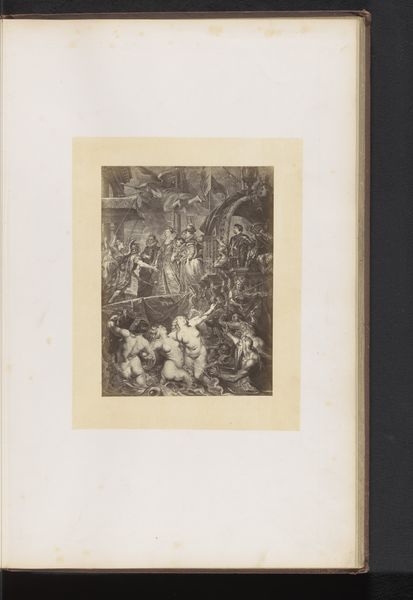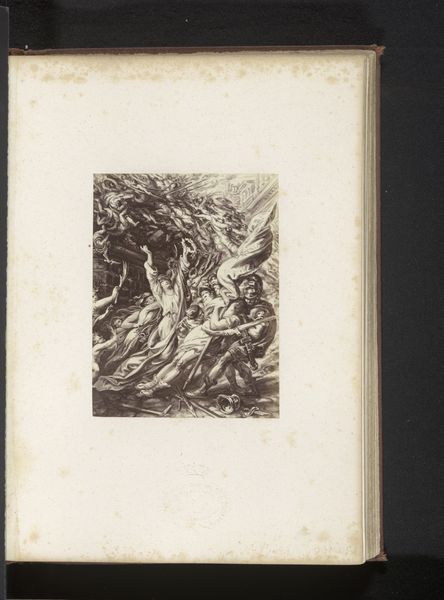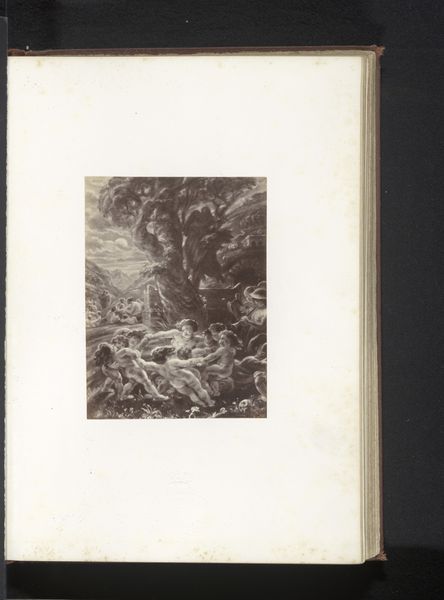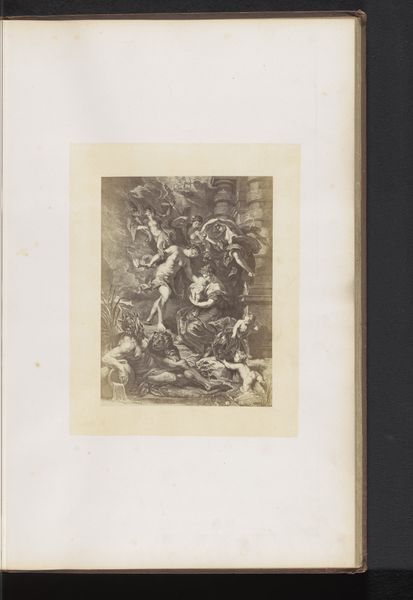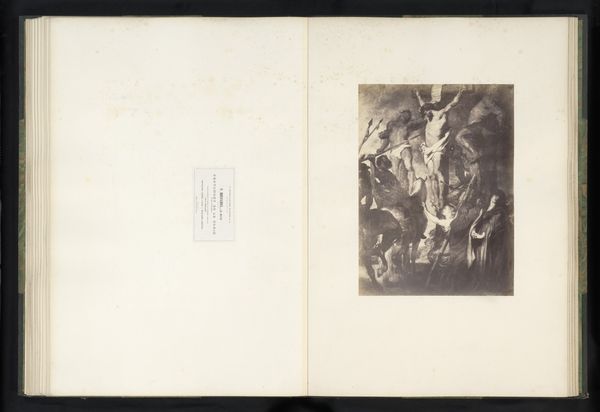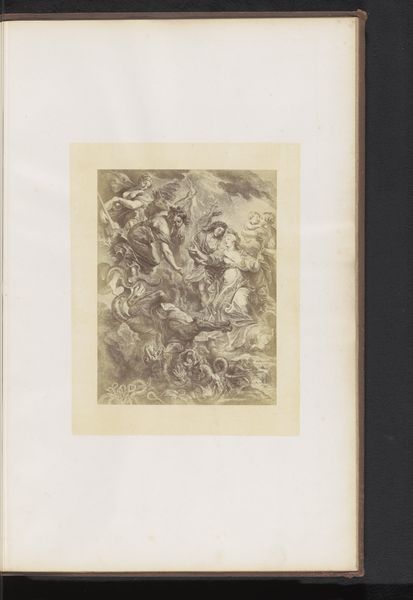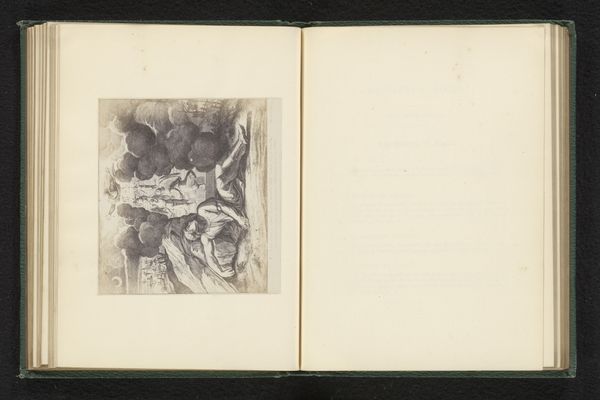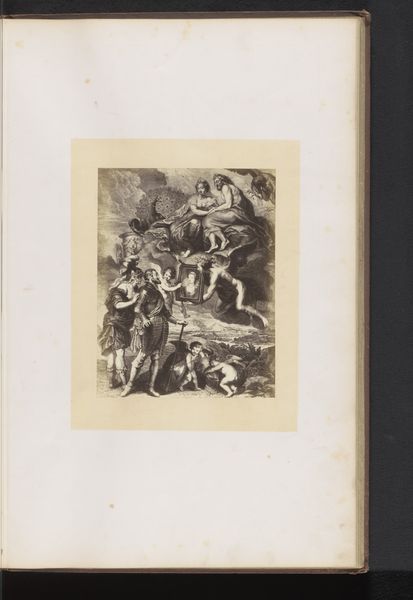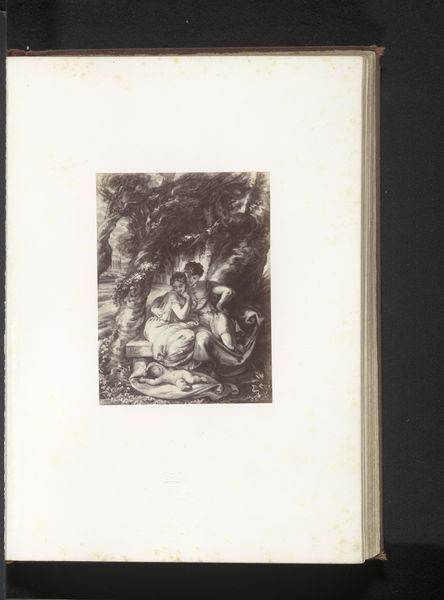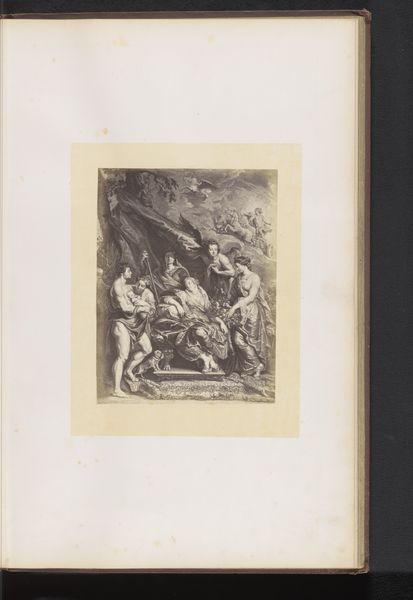
Fotoreproductie van In familie II: De liefdestijden door Antoine Wiertz before 1868
0:00
0:00
Dimensions: height 141 mm, width 104 mm
Copyright: Rijks Museum: Open Domain
This is a photographic reproduction by Edmond Fierlants of Antoine Wiertz's "In Familie II: De Liefdestijden," a composition dominated by an embracing couple encircled by a multitude of cherubic figures. These cherubs, classical symbols of love and innocence, evoke the ancient Roman god Cupid and his retinue, embodying the playful yet powerful force of affection. Such cherubic motifs have long pervaded art history, from Renaissance paintings to Rococo sculptures. Consider how Cupid, initially a symbol of divine love, evolved into the more secular, mischievous cherubs we see adorning Valentine's cards. The embrace itself, a primal expression of comfort and connection, transcends cultural boundaries. It echoes in countless works throughout history, from ancient Egyptian sarcophagi depicting familial bonds to Rodin's "The Kiss," each resonating with our collective longing for intimacy and belonging. The recurring motif of the embrace suggests our subconscious need for affection. These symbols create an emotional resonance that reaches across centuries, demonstrating how images are never truly still, but rather in constant motion, shifting and evolving, yet forever tethered to their origins.
Comments
No comments
Be the first to comment and join the conversation on the ultimate creative platform.
